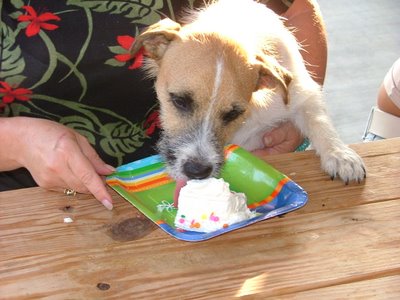 Katrina Fatigue means something entirely different to those who live in the areas affected by Katrina. After a year of mourning, denial, and anger, there still isn’t resolution or acceptance for many Katrina victims. Katrina Fatigue hits them every day when they’re fighting with their insurance company over losses, hammering shingles and laying flooring, waiting for an “as is” sale on their water-ravaged house, listening to the occupants in the FEMA trailer next to them fighting over a drug deal and hoping they don’t pull out guns because those aluminum walls don’t stop bullets. While lights in the French Quarter are shining again, the shadow of Katrina is everywhere.
Katrina Fatigue means something entirely different to those who live in the areas affected by Katrina. After a year of mourning, denial, and anger, there still isn’t resolution or acceptance for many Katrina victims. Katrina Fatigue hits them every day when they’re fighting with their insurance company over losses, hammering shingles and laying flooring, waiting for an “as is” sale on their water-ravaged house, listening to the occupants in the FEMA trailer next to them fighting over a drug deal and hoping they don’t pull out guns because those aluminum walls don’t stop bullets. While lights in the French Quarter are shining again, the shadow of Katrina is everywhere.Spike Lee’s “When the Levees Broke: A Requiem in Four Acts” spotlights the devastation of New Orleans’s Ninth Ward, a cramped section of old, wood-frame houses, occupied primarily by working-class blacks whose heritage in the city goes back generations. Many of the houses in the Ninth Ward have been scoured up and reoccupied, but whole neighborhoods were dozed and are being rebuilt. The orange search and rescue signs painted on the fronts of the homes remain visible, like graffiti tributes to survival. Habitat for Humanity has a rebuilding project going in a Ninth Ward neighborhood called Musician’s Village. The homes are going up two and three at a time, but they’re built from volunteer labor by people of all color from around the world.
 The often conspiratorialized 17th Street Levee break is blamed for much of the flooding that hit New Orleans, but east of that Levee is St. Bernard Parish, where that levee break just as hard. St. Bernard Parish, and other middle and upper class areas were also destroyed by hurricane winds, storm surge, or levee break flooding. Like those chronicled by Spike Lee, these were working class people, too; second and third generation New Orleans natives who’d saved and saved to buy a dream house in the suburbs. These residents still battle Katrina fatigue and many will never again occupy their dream home or get the insurance money to rebuild.
The often conspiratorialized 17th Street Levee break is blamed for much of the flooding that hit New Orleans, but east of that Levee is St. Bernard Parish, where that levee break just as hard. St. Bernard Parish, and other middle and upper class areas were also destroyed by hurricane winds, storm surge, or levee break flooding. Like those chronicled by Spike Lee, these were working class people, too; second and third generation New Orleans natives who’d saved and saved to buy a dream house in the suburbs. These residents still battle Katrina fatigue and many will never again occupy their dream home or get the insurance money to rebuild. Moving east, we traveled to Mississippi, stopping in Pass Christian, the coastal hamlet which got the full fury of Katrina on August 29, 2005. Residents of Pass Christian and other devastated areas along the Mississippi coast are the forgotten cousins of Katrina’s victims. Even New Orleans residents expressed concern and great compassion when we told them we were headed out to Pass Christian. We visited with several couples in Pass Christian whose homes my daughter worked on in a service mission last April during her college spring break. Their homes are nearly rebuilt, but the reconstructing of their lives is far from over.
Moving east, we traveled to Mississippi, stopping in Pass Christian, the coastal hamlet which got the full fury of Katrina on August 29, 2005. Residents of Pass Christian and other devastated areas along the Mississippi coast are the forgotten cousins of Katrina’s victims. Even New Orleans residents expressed concern and great compassion when we told them we were headed out to Pass Christian. We visited with several couples in Pass Christian whose homes my daughter worked on in a service mission last April during her college spring break. Their homes are nearly rebuilt, but the reconstructing of their lives is far from over.Katrina Fatigue is an easy term to use when we’re sitting in our air conditioned homes, drinking our designer water, and wearing new clothes from a pre-season rack at Macys. News fatigue hits from over-exposure and sensationalized media coverage. It focuses on incidents, rather than issues; personalities rather than persons, and victims, rather than victors. Katrina Fatigue is a cop-out term for over-stimulated and under-involved people. If you’re reading this, you are probably not one of them.
You can view more photos from my trip through the Gulf Coast in my website's photo gallery.

